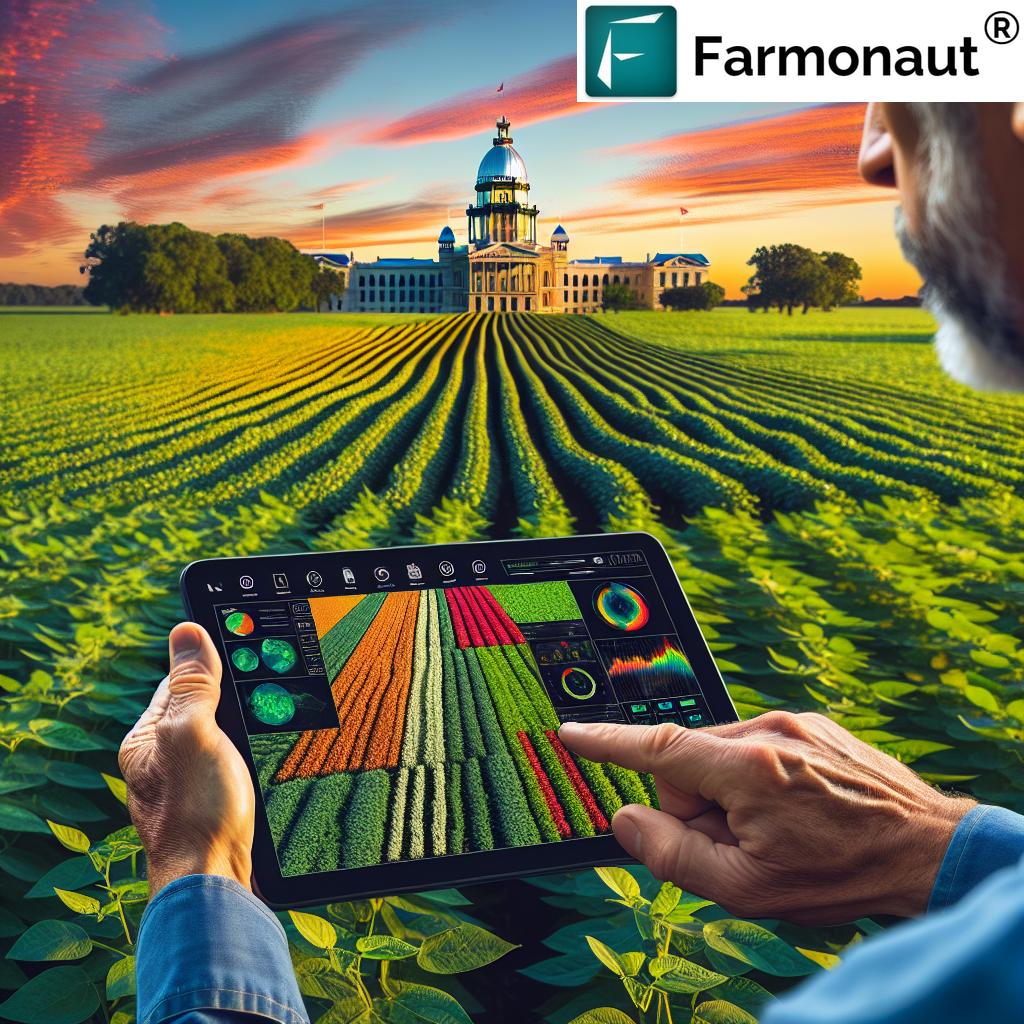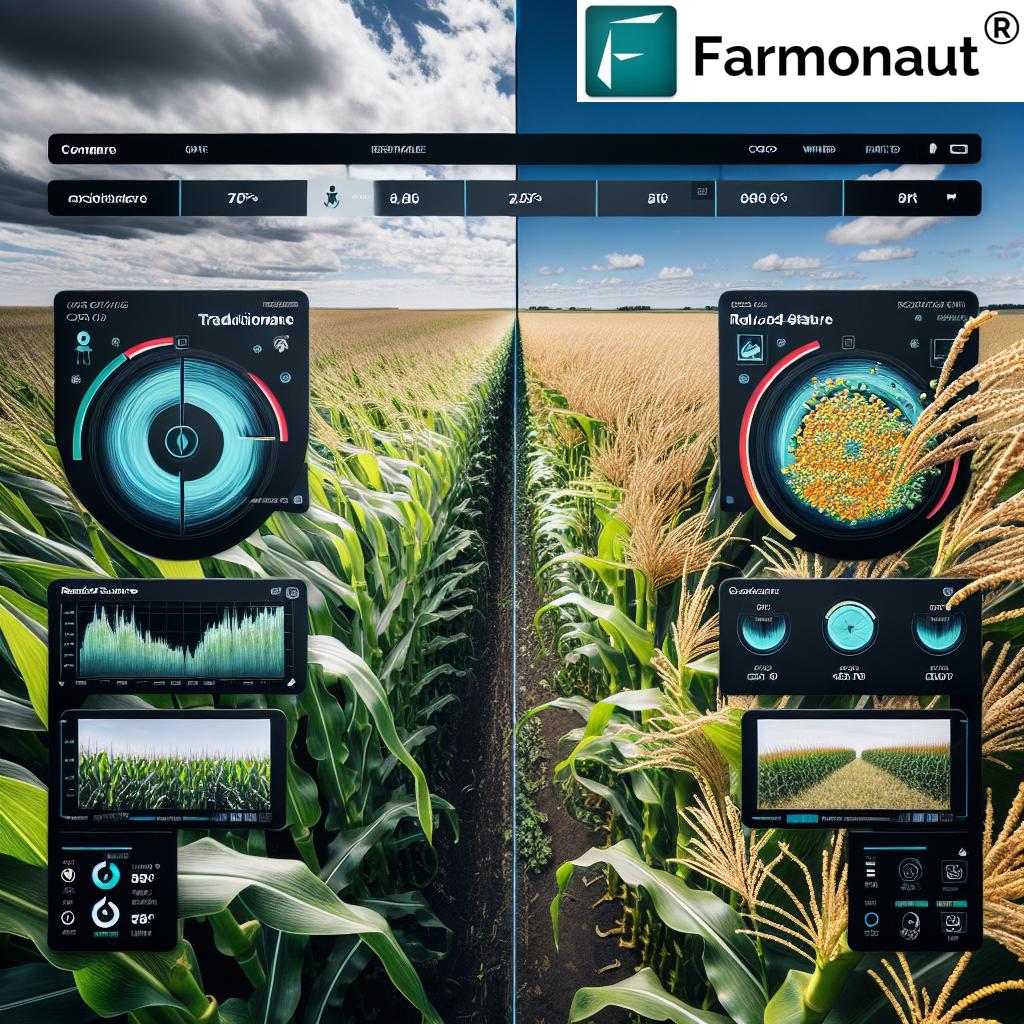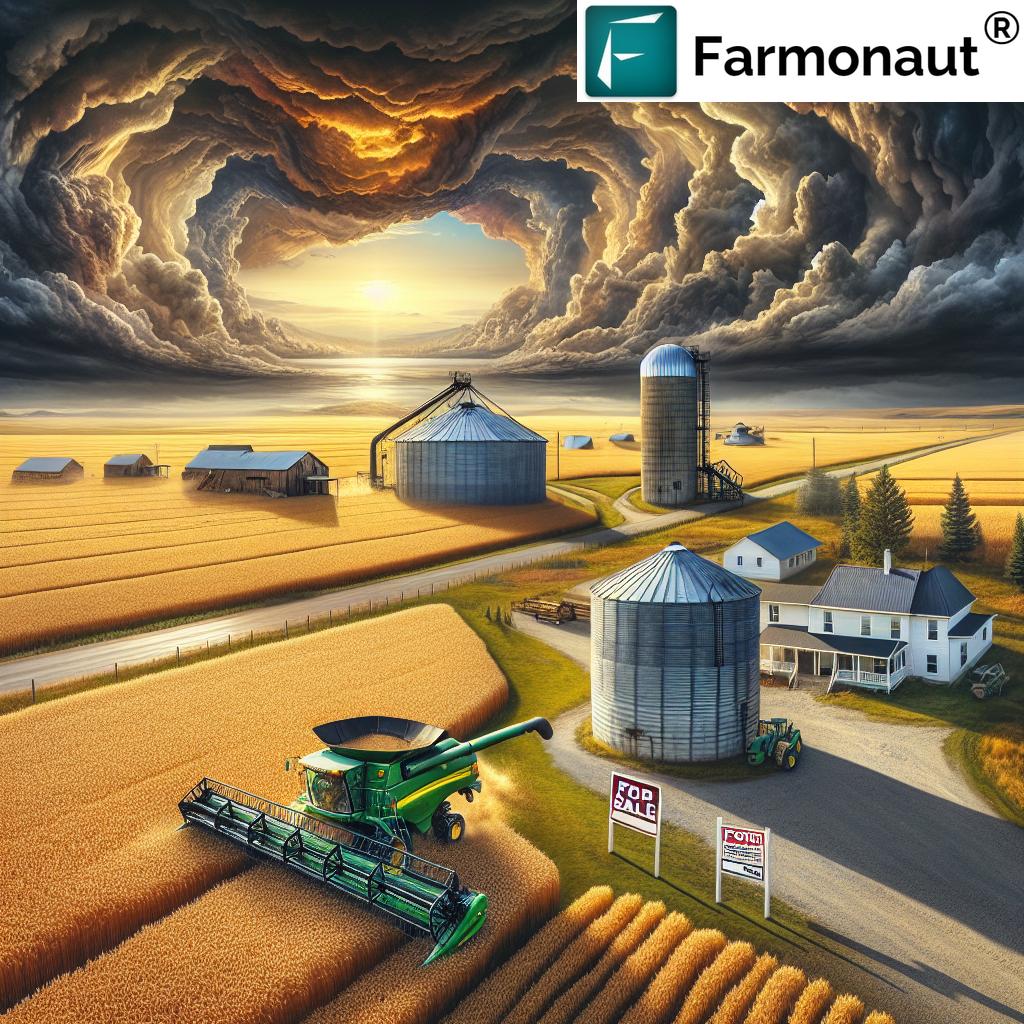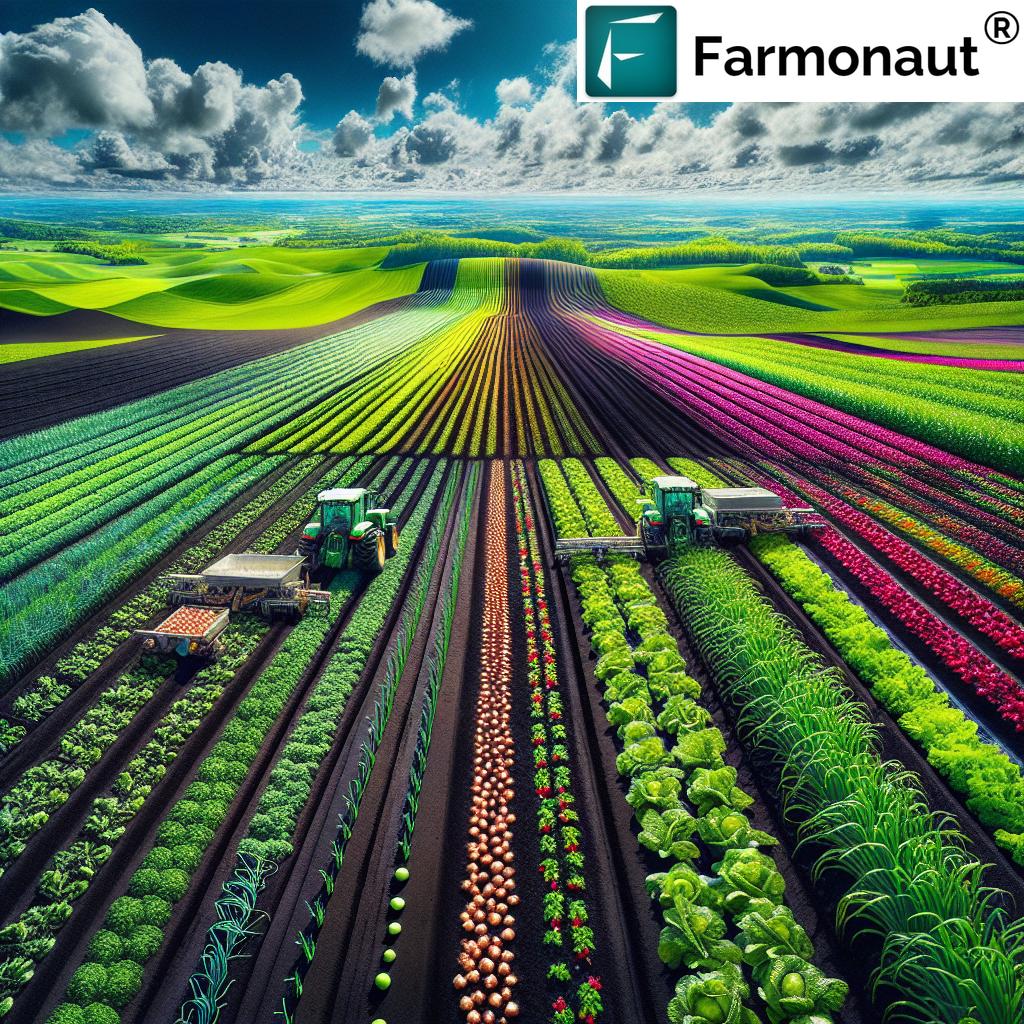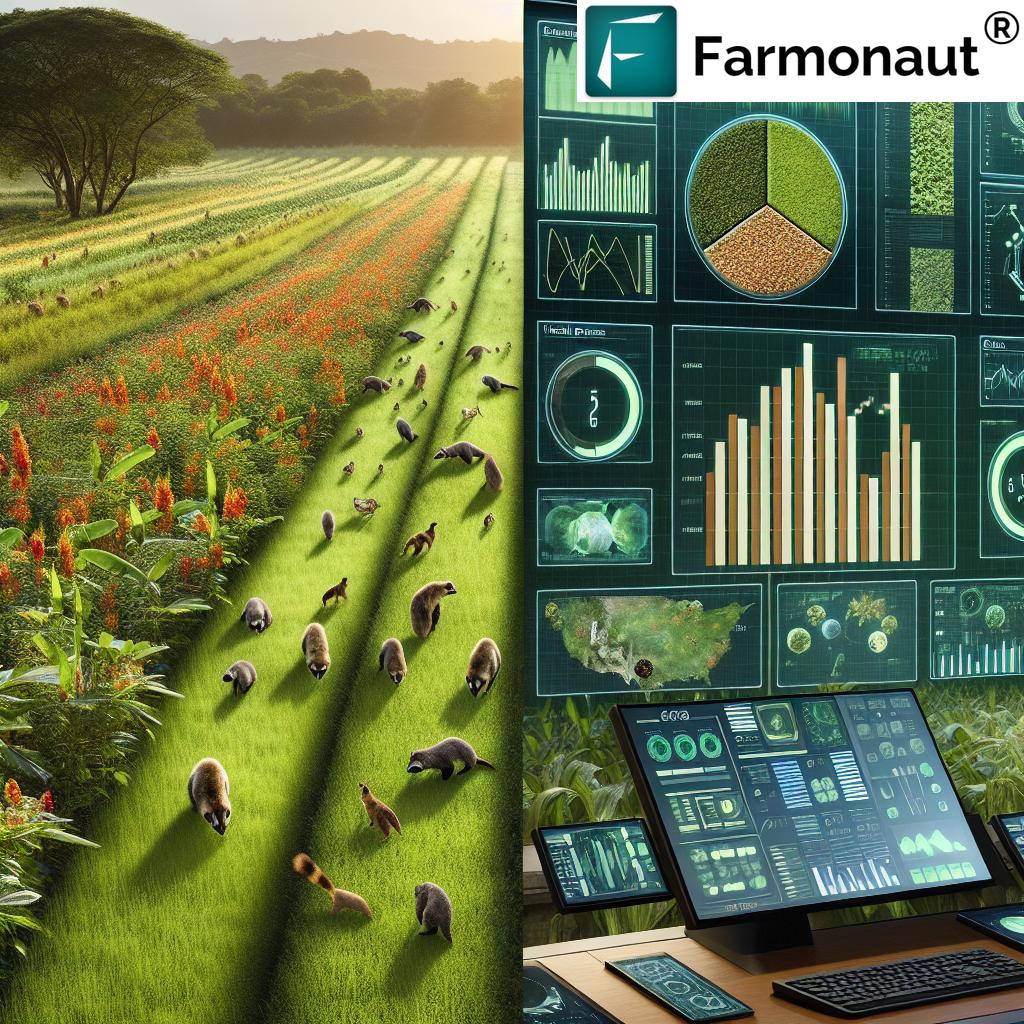Agriculture Data Collection Tool: 7 Best AI Tools 2025
“By 2025, over 80% of US corn farms are projected to use AI-powered data collection tools for yield optimization.”
Introduction: The Data Revolution in US Corn Farming
In 2025, the United States agricultural sector, particularly corn farming, continues to undergo a transformative evolution. This evolution is driven by advanced agriculture data collection tool usage, big data applications in agriculture, and the widespread adoption of AI-driven technologies. The integration of these agricultural data tools for corn USA is revolutionizing traditional approaches—moving us from intuition and fixed calendars to precise, data-driven management of fields, resources, crop health, and yields.
Modern agriculture data collection tools—including IoT sensors, drone imagery, and satellite-based monitoring—gather vast amounts of information across corn fields. But it’s AI and big data analytics that transform this dataset into actionable insights. These advances are the backbone of the revolution—empowering farmers to optimize yields, utilize resources efficiently, enhance environmental sustainability, and adapt to unpredictable weather and market conditions.
In this comprehensive guide, we’ll explore the 7 best AI-powered agriculture data tools leading US corn farming in 2025, examine their features, and show how artificial intelligence is redefining agricultural success in the era of big data.
How AI & Big Data Tools Transform Corn Farming
The integration of agriculture data collection tool with big data applications in agriculture and best AI tools for agriculture is radically improving the ways corn is produced, monitored, and delivered across the United States. Here’s how:
- Real-Time Monitoring: Advanced sensors gather moisture levels, nutrient content, soil pH, and plant health indicators. Drone and satellite imagery provide both micro and macro-level perspectives of crop development and weather patterns.
- Actionable Insights: Powered by AI and machine learning, data platforms continuously analyze and interpret massive amounts of farm and climate data, predicting pest infestations, yield forecasts, irrigation needs, and specific fertilizer/pesticide recommendations.
- Resource Efficiency: Precision agriculture modern tools reduce overuse of water, fertilizer, and chemicals, supporting both profitability and sustainability.
- Supply Chain Optimization: Data integration enhances storage, grain elevator operations, commodity trading, and market planning—reducing losses and price volatility.
- Sustainability & Compliance: Environmental impact monitoring ensures regulatory compliance and access to green markets, vital for sustainable agriculture in 2025.
Key Features of Modern Agriculture Data Collection Tools (2025)
The best agriculture data collection tool suites of 2025 for corn deliver comprehensive, actionable solutions. Let’s break down their shared capabilities:
- IoT & Soil Sensors: Capture real-time moisture, pH, nutrient data for precise field management.
- Drone-Based Imagery: Drones equipped with multispectral and hyperspectral cameras rapidly scan large fields for stress, weed, and pest indicators.
- Satellite Monitoring: Satellite platforms enable macro-scale observation of cropping patterns, soil health, weather events, and plant growth stages.
- Big Data Analytics: Advanced software aggregates historical and recent field data for trend analysis, performance benchmarking, and outcome prediction (yield, infestations, growth rate).
- AI Recommendations: Integrating artificial intelligence, these tools recommend tailored management practices for scheduling irrigation, applying precise amounts of fertilizer, and deploying pesticides only when needed.
- Cloud-Based Dashboards: One-stop access to operations, environmental impact data, compliance monitoring, and sustainability scorecards—often accessible via smartphones and web apps.
- API & Platform Integration: Most leading tools offer API access for seamless integration into existing farm management systems and supply chain software.
“Big data analytics in agriculture can process up to 1.5 terabytes of crop data per farm annually in the US.”
7 Best AI Tools for Agriculture Data Collection in 2025
We’ve curated the most advanced agriculture data collection tool solutions revolutionizing corn farming in the United States in 2025. Each brings unique strengths in data gathering, analysis, and actionable guidance for US farmers seeking to optimize yields and sustainability.
-
Farmonaut Satellite Crop Monitoring Platform
Farmonaut deploys satellite technology to deliver real-time crop health, soil moisture, and environmental impact data for corn fields. By combining multispectral satellite imagery, AI analytics, and blockchain traceability, Farmonaut enables data-driven precision agriculture at any scale.
- Key features: Crop health via NDVI, soil nutrient & moisture analysis, AI-powered weather forecasts, blockchain traceability, and fleet/resource management.
- Integration: Web, Android, iOS apps, plus robust API (API docs).
- Sustainability: Carbon footprinting and environmental monitoring for compliance and green certification.
With its unique blend of satellite data collection and AI-based advisory, Farmonaut is the go-to agriculture modern tool for scalable, affordable, and sustainable farming.
-
Climate FieldView
Climate FieldView integrates sensors and on-equipment collection devices (planters, sprayers, combines) with satellite imagery for comprehensive data logging. Machine learning models generate real-time insights for crop growth, yield prediction, and input optimization.
- Key features: Field mapping, yield analysis, planting prescriptions, and pest/disease modeling.
- Integration: Cloud platform compatible with leading equipment OEMs.
- Benefits: Easy visualization, actionable prescription maps, and seamless device syncing.
-
John Deere Operations Center
Leveraging IoT, in-cab sensors, and AI, the John Deere Operations Center connects equipment and farm data streams for automated, precise field decisions. Its data-driven dashboards refine planting, fertilization, and harvest schedules.
- Key features: Machine telematics, yield and application mapping, fleet management, AI-based equipment optimization.
- Integration: Direct with Deere machinery plus API for third-party tools.
-
Granular (Corteva Agriscience)
Granular is a farm management platform focusing on big data applications in agriculture. It unites digitized field records, finance, and forecasting with satellite, drone, and sensor feeds.
- Key features: AI-powered recommendations, profit/loss modeling, workforce management.
- Integration: Supports data imports/exports to leading agtech platforms.
-
Descartes Labs Agriculture Platform
Descartes Labs synthesizes earth observation data (satellite, drone, weather) with its cloud-based AI to model crop growth, pest spread, and yield estimates.
- Key features: Satellite-based vegetation indices, weather pattern prediction, deep learning analysis.
- Integration: Flexible API access for large-scale analytics and supply chain deployments.
-
Jeevn AI Advisory for Agriculture (by Farmonaut)
Farmonaut’s Jeevn AI analyzes farm satellite data, weather patterns, and historical crop performance to provide field-specific recommendations. It specializes in:
- Key features: Weather forecasts, custom fertilizer/pesticide schedules, pest risk warnings, resource optimization.
- Integration: Embedded in Farmonaut’s platform and available in the Agro-Admin App for large-scale farms.
-
Taranis SmartScout™
Taranis combines AI, high-resolution drone imaging, and field scouting to monitor crop health, detect pests/weeds, and forecast yields at the row/plant level.
- Key features: Sub-millimeter imaging, AI pest/disease alerts, rapid data turnaround.
- Integration: User-friendly dashboards and mobile apps for instant field assessment.
Comparison Table: AI Agriculture Data Collection Tools (2025)
| Tool Name | Main Functions | Type of AI Used | Estimated Data Accuracy | Integration Ease (1-5) | Estimated Annual Cost (USD) | Notable Pros / Cons |
|---|---|---|---|---|---|---|
| Farmonaut Satellite Crop Monitoring Platform | Soil & crop health, yield prediction, environmental impact, resource mgmt, traceability | AI, Machine Learning, Computer Vision, Blockchain | 92-97% | 5 | $350 – $3,000+ | Highly scalable, cloud-based, affordable. Pros: Wide data sources, fast ROI. Cons: Requires internet connectivity for full features. |
| Climate FieldView | Yield analysis, field mapping, prescription creation | Machine Learning, Predictive Analytics | 90-95% | 4 | $400 – $2,500 | Device-compatible, user-friendly. Cons: Some limitations with non-OEM equipment. |
| John Deere Operations Center | Machinery data, operational analytics, fleet management | AI, IoT Integration | 95-97% | 4 | $1,200 – $5,000 | Excellent for large fleets. Cons: Not hardware-agnostic. |
| Granular | Financial modeling, field records, field-level analytics | Data Science, Machine Learning | 91-95% | 4 | $1,000 – $6,000 | Strong ROI focus; Cons: Steeper learning curve. |
| Descartes Labs | Satellite/AI crop analysis, weather, pest prediction | AI, Deep Learning, Computer Vision | 92-98% | 5 | $5,000+ | Suitable for large growers. Cons: Higher entry price. |
| Jeevn AI by Farmonaut | AI crop advisory, weather, custom schedule recommendations | AI, Machine Learning | 93-97% | 5 | Included in Farmonaut subscription | Deep satellite+climate integration. Cons: Embedded in Farmonaut’s platform, not standalone. |
| Taranis SmartScout™ | Drone imaging, pest/weed AI detection, yield prediction | Computer Vision, Machine Learning | 88-92% | 4 | $2,500 – $7,500 | High imaging detail, fast alerts. Cons: Dependent on drone flight scheduling. |
Big Data & AI Platforms in Corn Agriculture
Big data applications in agriculture leverage both historical performance and real-time field data to empower US corn growers through highly accurate, evidence-based decisions:
- Forecasting: Combining weather, soil, and crop stage data, AI models generate highly accurate predictions for yield, pest infestations, water stress, and optimal harvest windows—reducing losses.
- Input Optimization: Analytics recommend the precise amount of fertilizer, irrigation, or pesticide needed, adjusting to field variability rather than relying on averages.
- Supply Chain Integration: Real-time maturity and yield data informs grain elevators and commodity traders, improving storage planning, reducing delays, and minimizing post-harvest losses.
- Compliance & Market Readiness: Automated reporting supports environmental compliance and prepares farms to access premium, sustainability-certified markets.
The scalability and affordability of cloud-based platforms, such as Farmonaut, make it possible for farms of all sizes to harness these powerful applications and stay ahead in a competitive landscape.
Integration for Precision, Efficient Farm Operations, and Sustainability
Modern agriculture data collection tool suites are not just about higher yields. They address the three pillars of success in 2025 and beyond:
1. Precision Agriculture
- Data-driven applications enable precision irrigation, fertilizer micro-dosing, and targeted pest control—matching inputs to field-specific needs rather than one-size-fits-all approaches.
- Drone-based platforms quickly scan corn fields for stressed plants, enabling spot treatment and reducing input costs.
2. Sustainability and Environmental Stewardship
- Environmental impact monitoring through advanced AI/analytics provides essential data for water conservation, reduced chemical runoff, and minimal soil erosion.
- Adoption of conservation practices (cover crops, minimal tillage) is tracked and optimized, aligning with both regulatory compliance and consumer expectations for “climate-smart” commodities.
- Platforms like Farmonaut offer carbon footprint tracking, further empowering US farmers to demonstrate eco-friendly practices.
3. Improved Farm Operations
- Farm management platforms consolidate satellite, sensor, and drone data into mobile-accessible dashboards, so growers can manage fleets, schedule labor, analyze cost trends, and track compliance from anywhere.
- Systems such as Farmonaut’s fleet management (learn more) help optimize vehicle and machine usage, reducing energy and repair costs.
- Embedded AI models automate predictive maintenance, preventing costly breakdowns during critical fieldwork operations.
The cumulative result: Modern precision agriculture modern tools maximize profitability, support regulatory & market requirements, and keep environmental impact in check—even as climate patterns grow more unpredictable.
Farmonaut: Transforming Corn Farming with Satellite & AI Technologies
At the forefront of the agriculture data collection tool evolution, we at Farmonaut are dedicated to delivering affordable, scalable, and actionable satellite-driven insights for US corn farmers and beyond. Here’s what sets our platform apart:
- Multispectral Satellite Monitoring: We deliver reliable NDVI-based crop health analytics, soil nutrient mapping, and irrigation guidance directly to your device.
- AI-Based Jeevn Advisory: Our proprietary Jeevn AI interprets field-specific data to generate custom weather forecasts, usage schedules, and risk warnings—so every input is scientifically optimized for your yield.
- Blockchain Traceability: With our traceability products, you can prove supply chain authenticity to buyers and certification agencies, adding value to every bushel.
- Resource Management: Our fleet/resource management tools help you deploy farm machinery efficiently, reduce downtime, and lower operational costs.
- Environmental Impact: We enable carbon footprint tracking and regulatory-ready environmental reporting, making sustainable practices accessible for all.
- API Flexibility: Developers and agribusinesses can directly integrate our satellite data API for a seamless on-farm or enterprise solution. (See API developer docs)
- Mobile & Web App Access: Our full feature set is available via Android and iOS apps (web, Android, iOS)—meaning EVERY American corn farmer can monitor yields from the palm of their hand.
- Flexible Subscriptions: We serve individuals, agribusinesses, and institutions with tailored pricing plans (see below).
Useful Farmonaut Links & Products
-
 Access the Farmonaut Platform: Manage all your crop monitoring, resource scheduling, and AI advisory in one dashboard.
Access the Farmonaut Platform: Manage all your crop monitoring, resource scheduling, and AI advisory in one dashboard.
- Farmonaut Satellite Data API (see API Documentation): Build your own custom integrations for precision agriculture at any scale.
- Traceability Solutions: Vital for grain elevators and commodity traders to ensure chain-of-custody and compliance.
- Carbon Footprinting: Quantify your farm’s environmental impact and bolster your market appeal.
- Fleet Management Tools: Lower your operational expenses with smart, satellite-guided fleet coordination.
- Satellite-Based Crop Loan & Insurance Verification: Streamline your access to loans and insurance, minimize fraud, and simplify approvals using real, current satellite data.
FAQs: AI Agriculture Data Tools 2025
What is an agriculture data collection tool?
An agriculture data collection tool is any technology—sensor, drone, satellite, app, or software—that gathers, analyzes, and displays relevant farm data (soil health, crop conditions, weather) to help farmers make informed decisions and optimize yields.
Why are agricultural data tools critical for corn farming in the United States?
Corn is the backbone of US agriculture. Accurate, timely data enables US farmers to monitor large fields, respond to pest threats, maximize inputs, adapt to variable weather, and boost both profitability and sustainability.
How does big data improve corn farming?
Big data applications in agriculture aggregate field, climate, and equipment data, empowering growers to forecast yields, reduce input waste, find efficiency gaps, plan supply, and streamline harvest—maximizing profitability and minimizing risk.
Are these AI agriculture tools accessible for small and medium US farms?
Yes. The move to cloud-based subscriptions and API-powered tools (like Farmonaut) makes advanced data collection and AI analysis affordable for smallholders, mid-sized, and corporate farms alike in 2025.
Can modern agriculture data collection tools reduce environmental impact?
Absolutely. By enabling precision input management, real-time environmental reporting, and compliance monitoring, these tools help farmers conserve water, reduce chemical runoff, and lower their carbon footprint.
What are the key factors in choosing the best agriculture data collection tool?
Consider data accuracy, ease of integration, affordability, scalability, support for your crop type and region, and the availability of AI-driven decision support.
How does Farmonaut support corn farmers in the US?
We at Farmonaut provide scalable, satellite and AI-powered solutions tailored for American corn farms to drive better crop monitoring, resource allocation, sustainability, and profitability.
Conclusion: The Future of Corn Farming in the US
In 2025 and beyond, US corn farming stands at the intersection of tradition and digital innovation. The adoption of agriculture data collection tools, advanced AI technologies, and big data analytics isn’t just a trend—it’s the new path to resilience, yield optimization, and sustainability. From Kansas to Iowa, Nebraska to Illinois, these tools empower farmers to thrive even as climate, market, and regulatory challenges intensify.
If you’re a decision-maker in the United States’ agricultural sector, staying competitive demands investment in modern agriculture data tools—not merely to stay afloat, but to lead. The fusion of real-time monitoring, actionable insights, and sustainable operations is the true recipe for agro-success in the digital age.
The bottom line: The future of American corn is bright, sustainable, and data-driven—with AI and big data applications in agriculture as its unwavering backbone.





